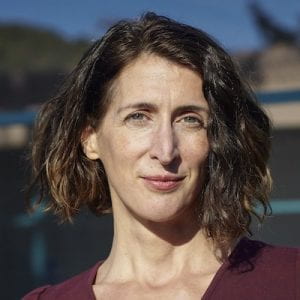“It’s important to just raise your hand, ask the stupid question, and try to encourage the other person to explain things in terms that you can understand.”
 An interview with Mirta Galesic, PhD (Professor, Santa Fe Institute)
An interview with Mirta Galesic, PhD (Professor, Santa Fe Institute)
By: Michelle Johnson (3/4/22)
Was a life in research something you always have envisioned for yourself?
I was interested in psychology from early on. I was inspired by a high school teacher in psychology, and I also wanted to do something different than my parents who were both chemists. I’m saying this because my main [research] interest is in how people make judgements based on their social environments as well as how people around us influence what we think and do. When you ask me how I became a psychologist, it was partially social influence: a cool professor in high school and defying my parents.
More seriously, another big influence was that I was born in (then) Yugoslavia in 1974, and when I was 16 or 17 years of age, the country fell apart. It was fascinating and scary to see this quick transformation from a relatively cosmopolitan and not very religious society to one strictly divided by national and religious lines. I started to wonder “How does this happen?” I became interested in how people perceive their social world, how they make collective decisions, and how that can be explained by how our social environments are structured.
What kind of impact would you like your work to have?
I think a big obstacle for social science today is that we are in closed circles: psychologists work mostly with psychologists, sociologists with sociologists, etc. We work in separate networks, and I don’t think there is enough communication. Therefore, I try to look across disciplines, notice what they’re doing and how is it related to my work, and how to inform the kind of questions I’m asking. When you’re in one discipline, you might just react to a previous paper. [For example, you might say] “Oh, this author was wrong in this little detail, and I will do an experiment to show that it’s actually different.” When you start talking across disciplines, [people ask] “What are you doing really? How are you helping us who are not psychologists?”
[A recent paper of mine] is the result of a workshop with 20 people including psychologists, biologists, computer scientists, physicists, and organizational scientists. As we started talking, we realized we’re all working on the same problem, only from different perspectives. That kind of integration is one goal.
The second goal of my research is to try to be more rigorous in the way we theorize about the world and how we test our models. Frequently in psychology, we talk in qualitative terms. I feel that we need to be more rigorous than that. In social psychology, when it comes to these big complex social problems, such as vaccination reluctance or climate change denial, we don’t have quantitative models predicting how public opinion is going to change. It’s a big puzzle for us. I’m trying to go into the direction of quantifying this mess in a semi-plausible way to make progress.
What advice do you offer to other researchers working in interdisciplinary spaces?
I think one important part is to ask questions. People often don’t know how to communicate their knowledge to another discipline because they’re not used to it. For example, when somebody gives a big talk and you don’t understand, you think “I must be stupid. This is so obvious because this person never tried to explain these things, and therefore, I just don’t have enough education or there’s something wrong with me.” None of us has all the knowledge of the nitty gritty details of different disciplines. Therefore, it’s important to just raise your hand, ask the stupid question, and try to encourage the other person to explain things in terms that you can understand. I also think it’s important to be humble and to not think of your discipline as having all the answers.
Another part is to find a common language. An initial problem in interdisciplinary meetings is that people don’t understand each other because they use the same term for different things or different terms for the same thing. As much as possible, try to rigorously write down your hypothesis in terms of an equation or an agent-based model.
Finally, to get people from different disciplines to work together, it usually makes sense to have a topic that’s interesting to everyone and then to look at it from different perspectives, therefore allowing everybody to contribute.
To learn more about Dr. Galesic and her work, click here.
Click here to go back to the “Interviews with Scientists” page.
